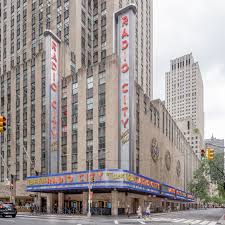
Introduction
Radio City Music Hall, often referred to as ‘The Showplace of the Nation’, is one of the most iconic entertainment venues in the world. Located in the heart of New York City, it serves as a symbol of American music and performance cultural heritage. With its stunning Art Deco architecture and rich history, Radio City stands as a significant landmark in the entertainment industry, making it crucial for both locals and visitors alike to understand its historical impact and contemporary relevance.
A Historic Venue
Opened in 1932, Radio City Music Hall was designed by the famous architects Edward Durrell Stone and associate Ralph Walker. The venue was part of Rockefeller Center’s expansive development and quickly gained fame for its lavish interiors and incredible acoustics. Throughout its history, Radio City has hosted countless memorable performances, from the annual Christmas Spectacular featuring the Rockettes to major concerts and film premieres. In 1978, the hall was designated a City Landmark, and in 1980, it was entered into the National Register of Historic Places.
Recent Developments
In recent years, Radio City Music Hall has continued to host a wide array of events while adapting to new trends in entertainment. In 2021, following shut-downs due to the COVID-19 pandemic, Radio City Music Hall reopened its doors, prioritizing safety while welcoming back audiences with full-scale performances. Notably, the venue has incorporated cutting-edge technology to enhance the audience experience, making it a blend of traditional and modern entertainment. The hall has also expanded its repertoire to include events like esports competitions and live podcasts, reflecting the evolving landscape of live entertainment.
Significance for Audiences
For both tourists and residents in New York, attending a performance at Radio City Music Hall is considered a quintessential experience. The venue not only represents a bastion of arts and culture but also provides a sense of nostalgia and connection to the past. Each performance contributes to its continuing legacy, ensuring that the rich history is not just preserved but experienced anew with every show.
Conclusion
As we look to the future, Radio City Music Hall is set to remain a vital part of New York’s cultural fabric. With its ability to adapt and innovate while honoring its historical roots, it promises to continue captivating audiences for generations to come. Whether enjoying a holiday tradition or a groundbreaking concert, visitors to Radio City Music Hall partake in a larger story of art, community, and resilience—one that resonates with anyone who walks through its doors.



